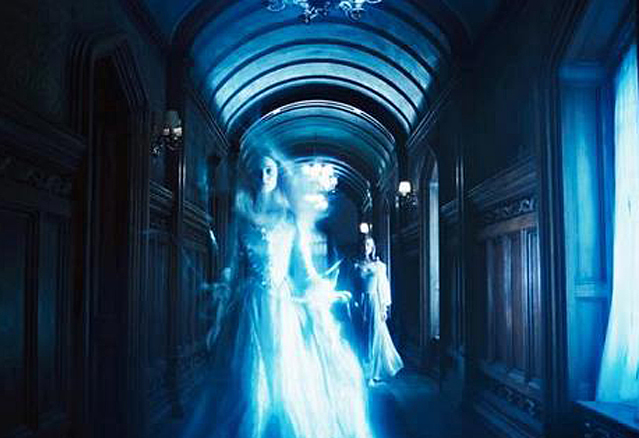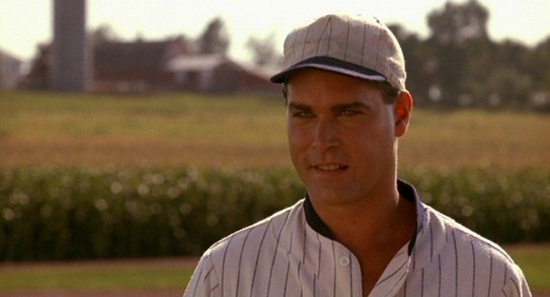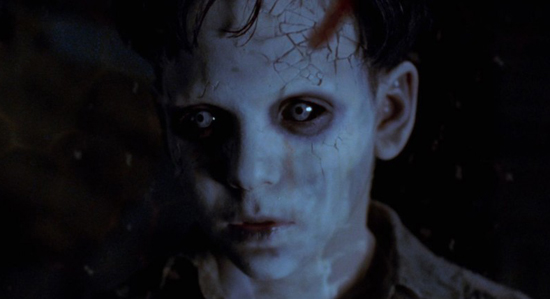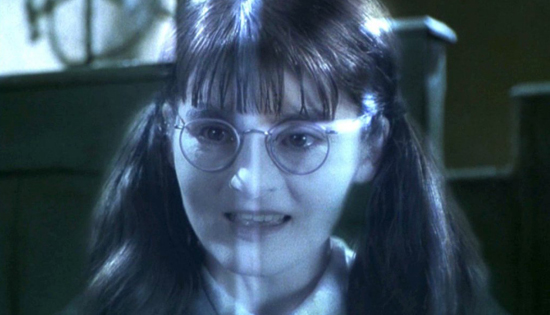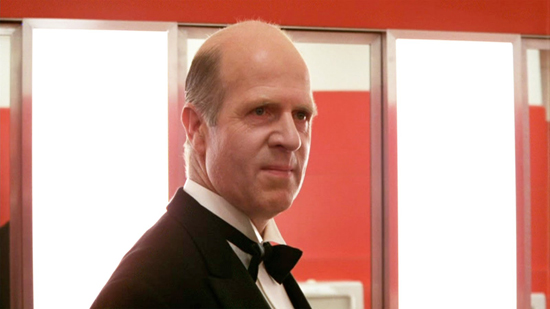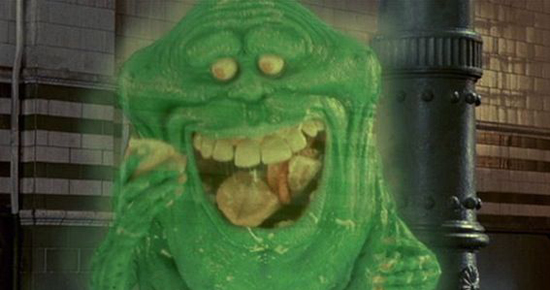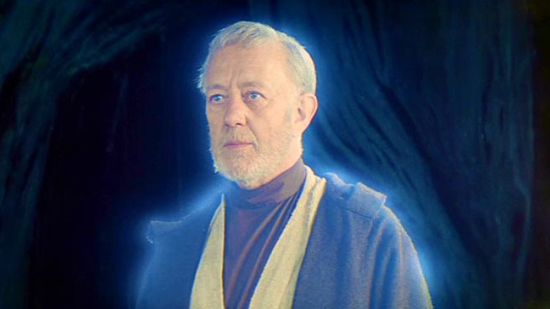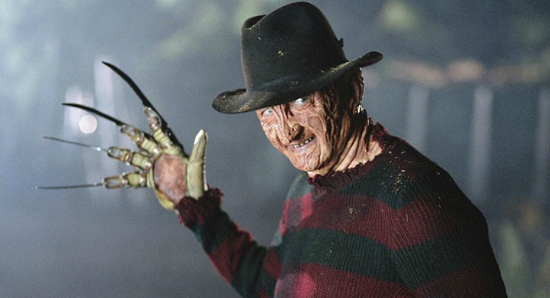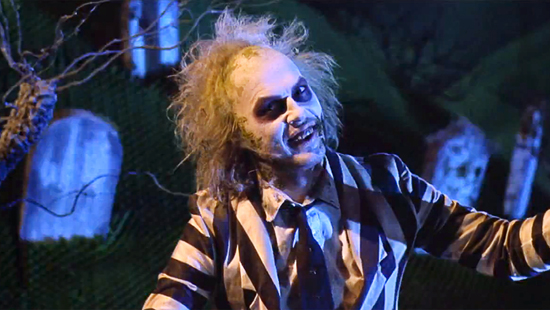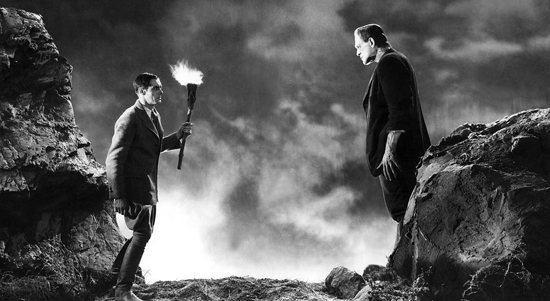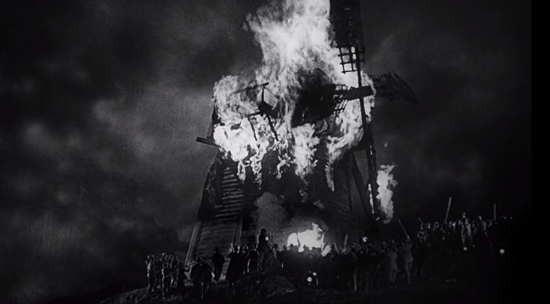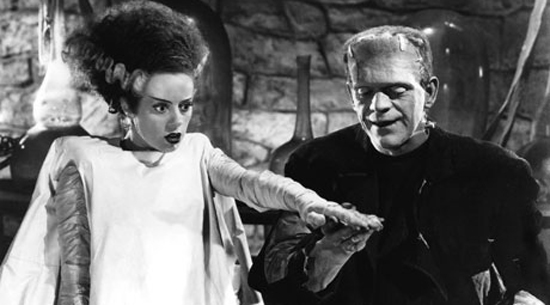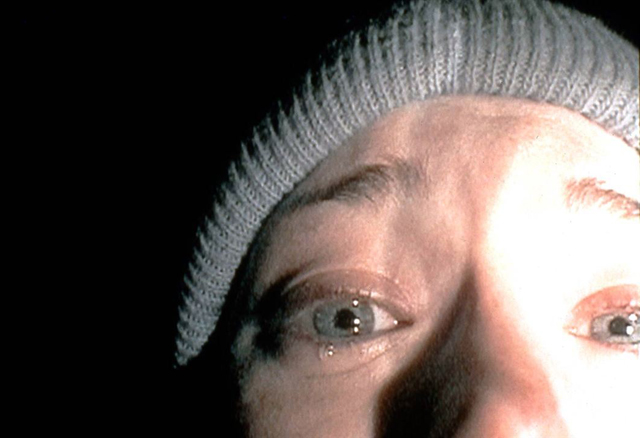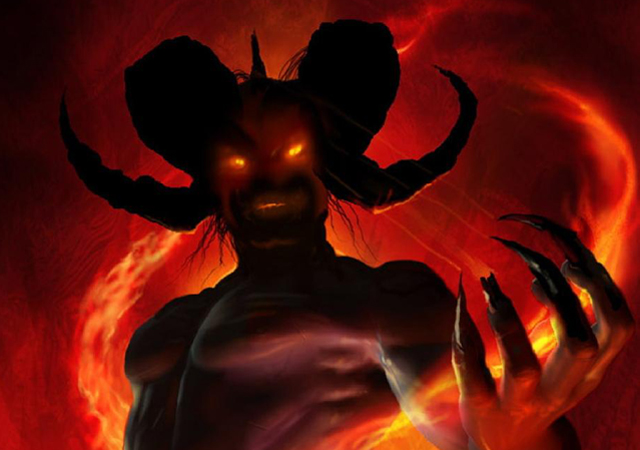
Halloween’s iconic band of monsters and ghoulish rogues consists of many different types. From ghosts, to vampires, to abnormal beasts, and more commonly nowadays the rising dead, there are plenty of creatures that inspire everything from costumes to movies found around this time of year. But, while most of these monsters are diabolical in their own right, there is no greater monster spread throughout pop culture and literature than the “man in black” himself; The Devil. Whatever name he goes by (Satan, Lucifer, Beelzebub), the Devil is certainly an iconic monster without rival. He is the antithesis to everything good, and the source of all evil in the world, which would make him the commander of all the other icons of Halloween given that description. Though the origins of the Devil are varied in many different cultures over several millennia, the image we most commonly associate him with today comes from the Christian conception of the demon. The Biblical devil would go on to influence the creation of Dante’s Inferno in the 13th Century; an epic poem that helped to build our modern day conception of Hell, the devil’s domain. These two sources are what Hollywood usually draws their image of the devil from, though his purpose in many of his screen appearances is surprisingly varied. Unlike other characters from the Bible, and from other cultural conceptions of the Devil, there is no set rules for the right or wrong way to depict him. For the most part, he shows up in movies, books, and other forms of entertainment, purely to represent evil in it’s purest form.
Because of the open-endedness of how best to bring the Devil into one’s story, there are so many different and varied depictions of “old Nick” in movies throughout the years. And it’s interesting how versatile a character he can be. He can serve as an impartial judge of your sins in Ernest Lubitsch’s Heaven Can Wait (1943); a granter of wishes in Bedazzled (1967); a client for a private eye in Angel Heart (1987); a lovelorn cartoon character in South Park: Bigger, Longer, and Uncut (1999); on the search for a mate in End of Days (1999); a seedy gangster in Constantine (2005); or even the source of a super hero’s power in Ghost Rider (2007). And yet, even in all these different purposes in a variety of different movies, they all mostly fall back on the traditional image of the devil that we are all familiar with; clothed in black or red (or both), dark beard (usually pointy), and usually with horns on his head. But, in rare occasions, movies will deviate from this image and hide the identity of the devil into someone or something unexpected. In Martin Scorsese’s The Last Temptation of Christ (1988), they even went as far as to depict the Devil as a compassionate little girl, leading that film’s Jesus Christ into the titular temptation, while he’s being crucified on the cross. For this article, I have picked out some of the most notable versions of the Devil on film, both to show how his use on film has changed or not changed over the years, and to show the many variances we have seen of the character on the big screen. So, delve down into the depths of Hollywood’s Hell and see the Devil in his most dastardly forms.
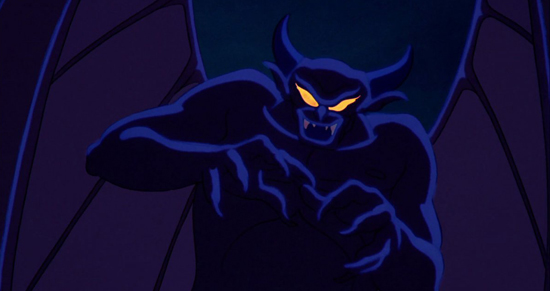
CHERNABOG from FANTASIA (1940)
Funny how one of the most vivid and compelling depictions ever of the Devil on the big screen comes from a film by Disney. Found in the Night on Bald Mountain segment of Disney’s Fantasia, this Devil is as close to a traditional, Dante-esque version of the character you’ll ever see in any movie. But, why does Disney give him the name Chernabog. It’s not an attempt by the animation powerhouse to distance their character from a biblical source. The credit for naming the creature was Disney animator Vladimir “Bill” Tytla, the man responsible for animating the character in the film. Tytla drew from his Ukrainian heritage to produce what he needed for this segment, and in the folklore of his native country, there is a demon spirit known as the Chernabog, which is very equivalent to the Christian concept of the Devil, so he married the two into one unforgettable creation. Tytla’s final animation of Chernabog is nothing short of amazing (something that animation experts still hold in high regard today). Gargantuan and all powerful, you really get a sense that Chernabog is the master of all evil in the world from this sequence. Though the segment has him do nothing more than rise ghosts and ghouls from their graves and make them perform dances in front of him, his menace is still palpable. Whether he is the truest sense of the Devil or not, he certainly fits the bill alright. He’s still to this day a favorite Disney villain to many, and why shouldn’t he be? The winged beast has gone on to be a standard representation of how the Devil should commonly look visually, and many other movies have taken Disney’s lead on that. Chernabog, over all others, brought the Devil his most epic of screen presences.
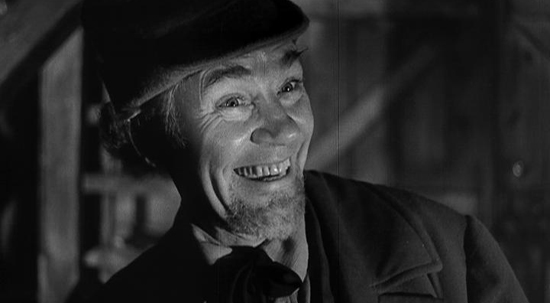
WALTER HUSTON from THE DEVIL AND DANIEL WEBSTER (1941)
Here we have a classic old Hollywood take on the Devil. A contemporary retelling of the Faust legend, the movie tells the tale of a farmer who promises his soul to the devil in return for economic success. After gaining a lot of wealth due to the wish granted by the Devil but little personal happiness, the farmer seeks to cut himself free of the contract and he enlists a lawyer named Daniel Webster to argue his case for him; although Webster himself is also under contract with the Devil. Going by the name, Mr. Scratch, this cinematic version of the devil is fine example of how to convey his image without making it obvious. Mr. Scratch, played in a wonderfully hammy way by Walter Huston (father of director John Huston), looks ordinary to anyone within the film, but the pointy, dark eyebrows, mangy goatee, and devilish grin make it clear to us who he really is. I especially like the touch of the brim on his hat, turned up on the sides to give the impression of horns on his head. What’s interesting about this version of the devil is that he’s not actively a force of evil, but instead one who capitalizes on the evil deeds of us mortals, merely supplying the means for our own destructive ends. He’s manipulative to be sure, but this movie also states that it’s our own vices and greedy ambitions that give him his power. It’s very different from the Biblical version of the Devil, who is a more active sower of discord. Here, he’s just waiting for us to slip up so that he can collect what’s left of our souls, a reminder of which the movie leaves on, with Huston breaking the fourth wall and pointing directly at his audience in the movie’s haunting final shot.
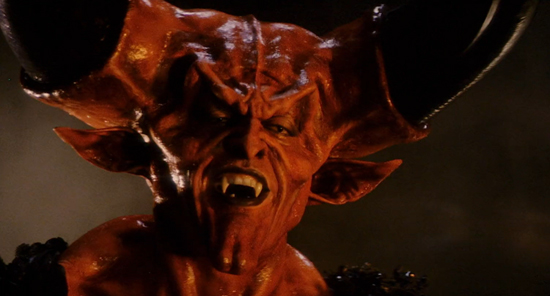
TIM CURRY from LEGEND (1986)
While the previous example I shared only suggested the image of the Devil, this version leaves nothing out. When anyone asks what the Devil should look like, this is probably going to be the first image that comes to mind. So, it’s interesting that this particular character has nothing to do with the traditional Devil found in scripture. The character here, known simply as Darkness, merely adopts the look of Satan, though he might as well be him, given his place within the story. Ridley Scott’s quintessentially 80’s fairy tale adventure features the character of Darkness as the master of all evil in the realm, so the Satanic persona fits very well. The movie is mostly hit or miss; the 80’s cheese has nostalgic value, but Tom Cruise in the role of an elfish forest child is a little odd. But, Tim Curry’s performance as Darkness is nothing short of amazing. For one thing, you have to respect the time he put into getting all that makeup applied to his face, and then acting through it all. Curry is without a doubt the highlight of the movie and the demonic vision that he and the makeup team has created is nightmare inducing. The sharp, grotesque features of his face are enough, but the over the top gigantic horns and burning yellow eyes make him all the more frightening. This is a very romanticized version of the Devil put on screen; beauty in the twisted and profane. He’s also a very sexualized version of the devil, preying on the heroine in a predatory way, and yet persuasive in his deception. While re-purposed for a different kind of fairy tale, this version of the Devil is probably cinema’s most dynamic recreation to date, giving us the iconic image in all it’s glory with an actor and design team inspired enough to pull it off.
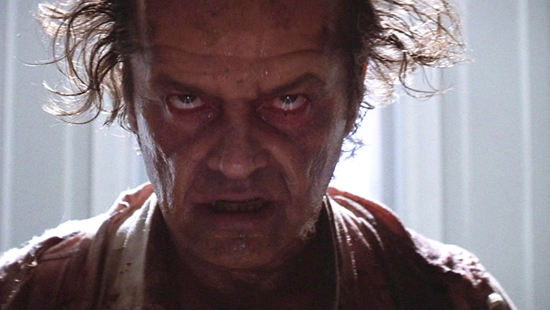
JACK NICHOLSON from THE WITCHES OF EASTWICK (1987)
Let’s face it; it was going to be inevitable that an actor like Jack Nicholson was going to play the Devil some day in a film. No stranger to playing the bad guy in movies (the Joker in Batman) nor a stranger to horror films either (The Shining), Jack Nicholson just seems tailor made to play the Master of everything evil in the movies. So, naturally the chance finally came along to play the Devil in George Miller’s dark comedy, The Witches of Eastwick. The film centers on three women in a small New England town (played by Michelle Pfeiffer, Susan Sarandon, and Cher) who encounter a mysterious newcomer named Daryl Van Horne (Nicholson). Daryl buys the mansion on the outskirt of town and invites each of the women there, and through their encounters, each discovers their own powers and become witches. But, gaining the powers only isolates them from the rest of the town, and soon they devise a way to turn their powers against him. This is a very different take on the Devil that we’ve seen to this point, and one that’s suited more towards the persona of the actor playing him. In this film, the Devil is a suave, playboy manipulator; ensnaring beautiful women through gifts and empowerment while at the same time, collecting their souls. Jack’s performance as Daryl is naturally within his wheelhouse, easily slippng into the charismatic playboy that the character must be. His performance stays strong even after that polished veneer is lifted once the witches turn their magic against him. Nicholson becoming unhinged towards the end, revealing more of the demon inside, is definitely one of the film’s highlights, especially the now famous “Women” monologue speech he delivers. The Devil himself couldn’t have made that moment any better.
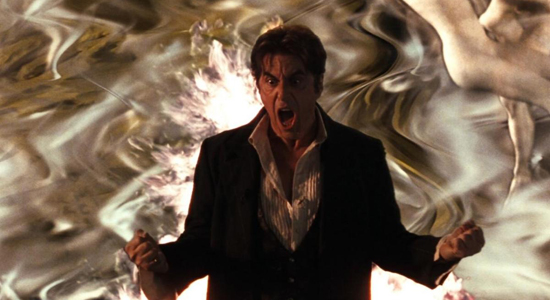
AL PACINO from THE DEVIL’S ADVOCATE (1997)
Just as inevitable as Jack Nicholson playing the Devil in a movie, we have also seen Al Pacino fill the role on the big screen. His version comes in a considerably darker film, co-starring Keanu Reeves and Charlize Theron. In The Devil’s Advocate, the Devil fills a very different role than we’ve seen before, which is that of a litigator. The souls he collects are not random victims, but rather clients, all of whom wish for the best defense that money can buy. But, it’s not them that this version of the Devil seeks the most; it’s Keanu Reeve’s hot shot lawyer that he wants under his power. Al Pacino is an actor with two different modes; either he’s very reserved and collected, or he’s wildly over the top insane, and by God he uses both modes here. The movie itself is a bit too dour and bleak at times, but Al steals every scene he is in, giving it the manic energy it needs. The climax of the movie, where Pacino’s Devil reveals his true nature and ambitions, gives the actor the free reign to do whatever he wants and it is a gloriously unhinged scene. His “I’m a fan of man” speech is ridiculously over the top, but it feels appropriate given who this is. What I like about this version of the character is that, like Mr. Scratch from The Devil and Daniel Webster, he’s a Devil that preys on man’s own misbehavior, and that his power is only possible by misdeeds of our own sins. As he states in the movie, vanity is his favorite sin, because serving solely in one’s self interest leads to every other bad deed in the book. It’s no mistake that this Devil goes by the name of John Milton, the same moniker of the author of Paradise Lost, another parable about ambition gone wrong. It was a masterstroke getting Al Pacino on board for this movie, and while the movie is sometimes boring, Al never disappoints.
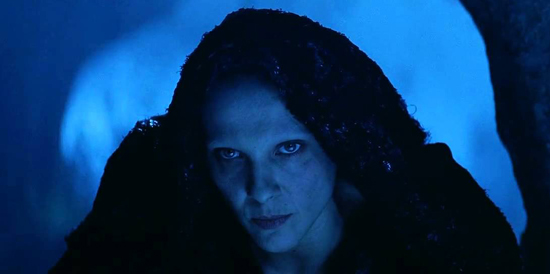
ROSALINDA CELENTANO from THE PASSION OF THE CHRIST (2004)
Here we return to the more biblical version of the Devil, with Satan present in this retelling of Christ’s crucifixion. While Mel Gibson’s hyper violent film is polarizing to this day, I think that one thing that does earn universal praise is it’s very vivid portrayal of Satan. Though Satan’s role in the story has it’s roots in biblical text, with the spirit hovering around in Jesus’ mind as he is tempted to give up his sacrificial plans, the visual representation of the character is somewhat unique. Instead of following the traditional image of the character popular in pop culture, with the horns and goatee, Gibson instead cast a female model in the role. There could be many different factors related to this. One, Gibson wanted to cast against type, thinking that the audience would expect someone who obviously looked liked the Devil we all know, and instead surprise us with this evil spirit in the form of something beautiful. Though she is beautiful, there is still something off about her, with missing eyebrows and cold stare; it’s still clear that there is menace behind the beauty. Secondly, and this is my own interpretation, I believe that Satan appears in this form in the movie to represent a twisted perversion of the purest thing in Jesus’ life, which is the love of his mother, Mary. Gibson seems to back up this idea at one point in the movie when we see Satan holding in one scene what looks like a child, but it turns out to be a grotesque looking demon; done as if to taunt Jesus during his suffering. Rosalinda Celentano fills the role perfectly and gives the Devil a very unsettling portrayal here, cold and unforgiving, and yet magnetic at the same time. Of all the evil acts that Christ suffers in this movie, none feels more potent than the sinister voice over his shoulder telling him that all his suffering is futile.

TOM WAITS from THE IMAGINARIUM OF DOCTOR PARNASSUS (2009)
Considerably lighter in tone than The Passion’s version of the Devil, here we have Satan imagined in a different type of persona; that of a gambler. The Imaginarium of Doctor Parnassus is notable mostly for being the film that actor Heath Ledger was in the middle of shooting before his untimely death, leaving his performance unfinished. Director Terry Gilliam managed to finish the film with all of Ledger’s footage intact, thanks to the help of some A-List actors filling out the remaining scenes. But, apart from the off screen dilemma with the film’s lead, the movie has one standout supporting performance from singer Tom Waits as the Devil. His version of the Devil is much less malicious in his actions and is more interested in stirring the pot to work things in his favor. In particular, he has an invested interest in besting the mystical Doctor Parnassus (played by Christopher Plummer), and claiming the soul of his daughter. For him, the misdeeds of mankind are all a game, and he’s solely interested in seeing more lost souls coming his way. He strangely allows Parnassus a shot at determining his own fate, and when the Devil ultimately wins in the movie, it leaves him strangely unsatisfied, as if he actually feels bad about seeing the Doctor lose everything. A rare case of sympathy from the devil. Waits is an ideal choice for the part, keeping the character foreboding when he needs to be, but quirky at the same time. With the bowler hat and ratty looking tuxedo, his costume definitely supports that gambler aspect of his character perfectly; making him the underworld’s top mafioso. Considering Waits own fascination with the Dark One in his music (a common theme) he delivers enough credibility to the character to make him far more interesting and likable than he normally would.
Hollywood certainly has gotten their mileage out of this character over the years and he will most certainly be around for a long time still. Horror remains a potent genre in film-making and to present the highest form of evil incarnate on screen, the Devil will have to be involved in some shape or form. But, even beyond the Horror genre, there are still surprising ways to work the presence of the Devil into your stories. As shown above, the Devil can be a part of fantasy (Legend), in a comedy (The Witches of Eastwick), in a religious film (The Passion), a psychological thriller (The Devil’s Advocate) and even be a part of an animated musical (Fantasia). Whether he’s a trickster, a manipulator, or the harbinger of the world’s end, there are countless possibilities with how to use him. I think that the Devil works best as a character in movies when the film moves away from the traditional image of the horned demon and portrays him as something different, although Tim Curry’s Darkness from Legend pulls off the traditional look to utter perfection. Other versions like Jack Nicholson’s Daryl and Al Pacino’s John Milton are able to convey the embodiment of the Devil, without ever having to resort to the pitchfork and horns. These along with the memorable portrayal of Satan in The Passion show that the Devil doesn’t have to look scary in order to be scary. Just the idea that this is a being that has power and influence over us mortals is a scary enough idea alone, and that’s what gives the character such a strong presence in any big screen appearance he makes. As far as Halloween icons go, few can generate a sense of terror the same way as the Devil does.
